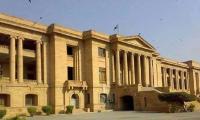LAHORE: To counter the increasing urbanisation and its effects on environment, Water and Sanitation Agency (Wasa) has planned to build six waste water treatment plants in the provincial capital in near future.
Sources in Wasa told that the agency has planned a total of six waste water treatment plants for the provincial metropolis out of which feasibility study of three plants had been completed while feasibility study of the remaining three is under preparation.
The three plants with completed feasibility studies included a plant at Mahmood Booti with an approximate capacity of 68 million gallons a day (MGD), a plant at Shadbagh with 88 MGD capacity and the third plant at Shahdara with a capacity of 55 MGD. Once constructed, these plants will treat municipal waste water, which at present is going untreated into the River Ravi.
The other three treatment plants, which are under consideration, would be constructed at Babu Sahbu, Mohlanwal and Ferozepur Road near Hadyara Drain, sources in Wasa revealed and added that the first three mentioned plants would be executed on emergent basis.
The rough estimation of sector-wise distribution of waste water production shows around seven percent industrial, five percent commercial, 72 percent urban and suburban while 16 percent agricultural waste water is produced.
The age old traditional approach of managing and treating waste water in the provincial metropolis has made it increasingly difficult to meet the growing challenges with added population due to urbanisation and the resulting waste water volume, said a senior Wasa official, adding with massive infrastructural projects in the city acting as a catalyst for the already serious problem of urbanisation, there has been a consequent increase in the generation of waste water.
According to the World Bank, Country Water Resources Assistance Strategy the Lahore District produces around 300 million cubic meters of waste water every year which is around 12.5 percent of total waste water generated by all major cities of the country.
“Lahore is a mesh of planned and unplanned habitat that completely lacks a waste water management system. The city is at a juncture where the government does not only need to address the current challenged regarding waste water management, but needs to plan at least 50 years ahead. Such projects cannot be done every other year and therefore they need to be planned and executed ahead of time”, said Dean, Faculty of Architecture & City Planning University of Engineering and Technology, Lahore Dr Ghulam Abbas Anjum.
He went on to express his discontentment regarding the waste water distribution system in the country and said that it has been in place well over its life and needs emergent re-installation. “Its all connected, unless the distribution system is updated, the management or treatment plan cannot work efficiently”, he opined.
In Lahore, the receiving body for waste water is the River Ravi, in certain cases, the irrigation canals while in some cases the vegetable farms on the periphery of the city. However, due to the traditional method of routing waste water based on age old characterisation from almost obsolete methods does not seem to be working as the procedures are outdated.
Wasa Managing Director (MD) Zahid Aziz said the agency has already in the process of finalising an internationally standardised approach to the waste water management system. “We are going to employ the global standards of the four-tier management method and testing system based on international standardisation tools like the ISO 14001, ISO9001 and the OHSAS 18001 (Occupation Health and Safety Management System)”, he said.
The accurate testing would allow for methodical management, while at the same time keeping a check on the nature and level of toxicity of the diversely sourced discharged water, he maintained.
Explaining the four step model, Wasa MD revealed that the first step would be to work towards a reduction in the quantity of chemicals to be used in testing along with replacement of less hazardous chemicals than hazardous chemicals. After that some of the used waste water can be directly disposed of in the sewer which is normally known as ‘Safe Chemicals’ while some of the waste can be chemically treated and then disposed of in the sewerage system. The remaining waste involving normally hazardous chemicals are normally taken care by third parties, he told.
“The broader idea is to establish an Environmental Management System (EMS) that maps out a framework resource efficiency, reduce waste, and drive down costs. It will also help Wasa to control occupational health and safety risks, which is something I have been personally very concerned about”, he concluded.
This file photo shows farmers working in a wheat field. — AFP/FileLAHORE : The Punjab Agriculture Department has...
Pakistan Furniture Council Chief Executive Officer Mian Kashif Ashfaq gestures during a meeting on May 31, 2024. —...
Newly elected general secretary of the Young Neurosurgeon Forum, Dr Asad Shah. — paksn.org/fileLAHORE : The...
Inspector General of Police Punjab Dr Usman Anwar addressing an event on December 17, 2023. —...
A vendor arranging fish to attract customers at his setup in Lahore on November 22, 2024. — APPLAHORE : A former...
Police officers stand behind crime scene Police tape. — AFP/FileLAHORE : The body of a kidnapped person, Ahsan...







